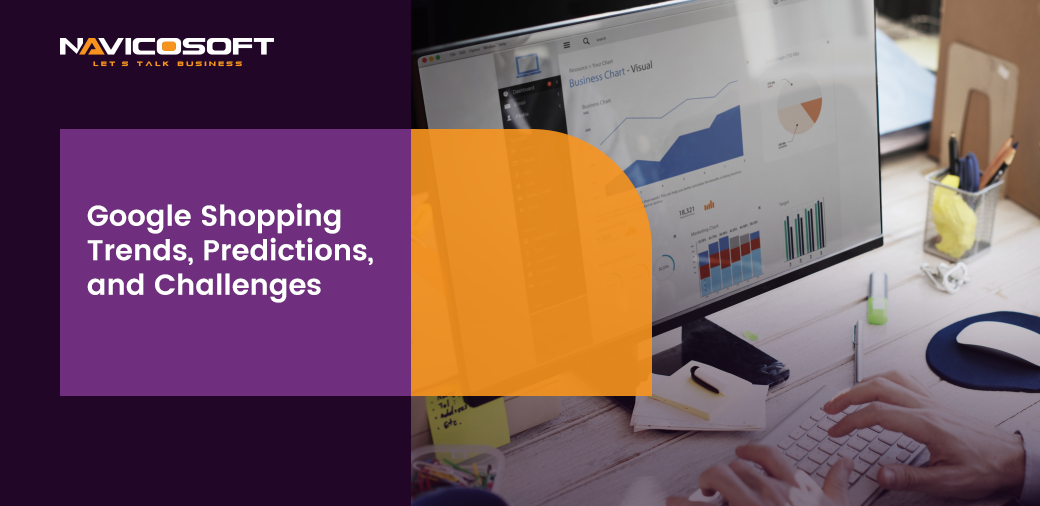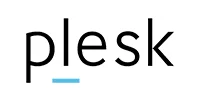Hosting services with real-time fast performance?

Google Shopping Trends, Predictions, and Challenges | 2023
The year 2023 is undoubtedly an exciting time for Google Shopping as it continues to redefine how people shop online. That being said, with businesses pursuing the Ecommerce ecosystem every day, there is a new Ecommerce website. The ever-changing online retail landscape requires us to explore Google Shopping trends, understand upcoming predictions, and identify potential challenges. This analysis helps businesses adapt and thrive, harnessing the evolving potential of this platform.
A brief insight into Google Shopping Trends in 2023
As we live through 2023, it’s clear how Google Shopping is changing and growing. Let’s think about it like we’re on a journey, with each step being a new trend or change in Google Shopping. It will help us understand how we buy things online and how businesses sell their products.
So, let’s start our journey and discover the ten main online Shopping trends in 2023.
Google Shopping Trend 1: Making Shopping Personal
Like how your best friend knows what you like, Google Shopping has started understanding your likes and dislikes. They do this by looking at what you search for and what you buy. It means you get to see products that match your taste, making shopping fun and less time-consuming.
How Google Shopping Achieves Personalization?
Google Shopping achieves personalization by using machine learning and AI algorithms to analyze a user’s past behavior. It can include what products they’ve viewed, what items they’ve purchased in the past, how they’ve rated or reviewed products, and what items they’ve decided to add to their shopping cart but didn’t purchase.
Google Shopping also factors in the user’s search history on Google, location, device, and even the time of the day. All this data gives Google Shopping a deep understanding of the user’s preferences, habits, and needs.
Benefits of Personalization
- Improved Shopping Experience: By showing relevant products, personalization reduces the time and effort users spend looking for what they need. It makes the shopping experience more enjoyable and efficient.
- Increased User Engagement: When users see products that are relevant to them, they’re more likely to click on them and explore further. Ultimately, it leads to higher engagement rates.
- Higher Conversion Rates: Personalization can bring higher conversion rates because when users are shown products that match their needs and preferences, they’re more likely to purchase.
- Enhanced Customer Loyalty: Personalization can also lead to improved customer loyalty. When users feel that their needs are understood and catered to, they’re more likely to return and use Google Shopping again.
Google Shopping Trend 2: Shopping with Your Voice
Have you ever wished you could say what you want to buy instead of typing it? In 2023, this wish came true! Google Shopping now lets you use your voice to search for things you want to buy. It is helpful when your hands are busy or when you find typing hard.
How does Google assist in voice shopping for consumers?
Google Shopping leverages advanced voice recognition technology to understand and interpret what users say. Google uses AI and complex machine algorithms to translate spoken language into text, analyze the text to understand what the user is looking for, and then bring up the most relevant search results.
In addition, Google also uses natural language processing technology to understand the intent behind the user’s commands. For example, it can understand whether a user is looking to buy a product, compare prices, check its availability, or track an order’s status.
Benefits of Voice Shopping
- Convenience: Voice shopping is hands-free, making it convenient for busy users who find typing hard. For example, if you’re in the middle of cooking dinner and realize you need to order more ingredients, you can do so without touching your device.
- Accessibility: Voice shopping also benefits users with visual impairments or other disabilities that make typing difficult.
- Speed: Speaking is often faster than typing, especially for longer queries. So, voice shopping can help users save time.
- Integration with Smart Home Devices: Voice shopping also integrates well with smart home devices, allowing users to shop from anywhere in their home simply by speaking a command.
After looking at these two trends, let’s move on to our third trend in Google Shopping in 2023.
Google Shopping Trend 3: Shopping on Your Phone
More and more people are using their phones to shop. To make shopping easier for these people, Google Shopping has ensured their website looks good and works well on phones. It makes shopping on your phone as easy as shopping on your computer.
Google Shopping Trend 4: Trying Things On Virtually
Imagine if you could try on clothes without going to the store. Or, imagine if you could see how a new couch would look in your living room without buying it first. In 2023, this became possible! Google Shopping now lets you use augmented reality (AR) to try things on or see how things would look in your home.
How AR Works in Google Shopping?
Google Shopping uses AR technology to allow customers to ‘try on’ or ‘see’ products virtually. For example, if you’re shopping for a pair of glasses, Google Shopping’s AR feature lets you virtually ‘try on’ the glasses. AR uses your device’s camera. The AR technology overlays the glasses onto your face, letting you see how they would look on you.
Similarly, if you’re shopping for furniture, you can see how a table or sofa would look in your living room. The AR feature overlays the furniture item onto your room, as captured by your device’s camera, providing a realistic view of how the item would fit and look in your space.
Benefits of AR in Google Shopping
- Improved Buying Confidence: AR reduces the uncertainty of online shopping. It allows customers to use virtual reality products in their own space or on themselves. It helps them make to make purchasing decisions efficiently.
- Reduced Returns: By giving customers a better idea of what they’re buying, AR can help reduce returns. When customers can ‘see’ a product in their own space, they’re less likely to be disappointed with it when it arrives.
- Fun and Interactive Shopping Experience: AR makes shopping more fun and interactive. It’s an engaging way to shop beyond just scrolling through product listings.
- Better Product Understanding: AR can better understand the product by showcasing its functionality, features, and size in a real-life context.
In conclusion, AR in Google Shopping bridges the gap between online and offline shopping. It provides a more engaging, informative, and confident shopping experience. It helps customers to interact with products virtually in their own space. This trend represents a significant advancement in e-commerce, enhancing the user experience and business outcomes.
Google Shopping Trend 5: Smart Shopping Suggestions
Have you ever been amazed when Google Shopping suggested what you wanted? They use artificial intelligence (AI) and machine learning to understand what you want. It makes shopping faster because you can find what you want more quickly.
Google Shopping Trend 6: Searching with Pictures
Sometimes, you might see a product you want but need to know what it’s called. Google Shopping solves this problem by letting you search using pictures. You can upload a photo of what you want, and Google Shopping will find it.
Google Shopping Trend 7: Supporting Local Stores
2023 was the year when Google Shopping started helping local stores. Now, you can find and buy products from stores in your town or city. It helps you support your community and helps local businesses grow.
Google Shopping Trend 8: Changing Prices
Have you ever noticed how the prices of products can change? Sometimes they go up, and sometimes they go down. It is called dynamic pricing, and Google Shopping started using it in 2023. You could get a better deal if you buy quickly. Let’s examine it impacts Google Shopping.
How Dynamic Pricing Works in Google Shopping?
In Google Shopping, dynamic pricing comes into play through its complex algorithms, allowing real-time pricing changes. These algorithms consider factors like customer demand, inventory levels, and competitor pricing to determine the most effective price for each product.
For example, if a particular product is selling fast and the inventory is running low, the price may increase. On the other hand, if a product isn’t selling well, the price may drop to stimulate demand.
Impact of Dynamic Pricing on Google Shopping
- Improved Sales: Dynamic pricing can help retailers improve their sales on Google Shopping. To set prices compared to market demand, sellers can optimize their pricing strategy to increase sales and maximize profits.
- Competitive Advantage: By allowing retailers to set their pricing based on what their competitors charge, dynamic pricing helps them this way. It is how dynamic pricing can give them a competitive edge. It helps ensure that their prices are always competitive and attractive to buyers.
- Customer Perception: Dynamic pricing can also influence how customers perceive a product or brand. Customers who see a product’s price increase due to high demand may perceive it as more valuable or desirable. Conversely, seeing a product’s price drop may make it seem more affordable and enticing to potential buyers.
- Customer Engagement: The knowledge that prices can fluctuate can encourage customers to engage more with the platform, checking back frequently to see if the prices of items they’re interested in have dropped.
In conclusion, dynamic pricing is a critical trend in Google Shopping for 2023. It plays a significant role in shaping customer behavior and seller strategies, making it a critical factor in the e-commerce ecosystem. However, it’s also essential for sellers to balance dynamic pricing strategies with customer satisfaction and trust, as excessive price fluctuations can lead to customer frustration and a sense of unpredictability.
Google Shopping Trend 9: Shopping that Doesn’t Harm the Environment
More people want to buy things that are good for the environment. Google Shopping made this more accessible in 2023 by showing which products are eco-friendly. It means you can make choices that are good for the planet.
Google Shopping Trend 10: Helping Businesses Understand Their Customers
Google Shopping also helps businesses understand what their customers want. Moreover, they do this by giving businesses information about what people buy. In this way, this helps businesses sell more products and make their customers happy.
So, there we have it – ten Google Shopping trends in 2023. Each trend helps us shop better, whether by making shopping more personal, letting us shop with our voice, or helping us make eco-friendly choices. As the year goes on, we’ll see more trends, and Google Shopping will continue to change and improve.
After discussing the Google Shopping trends, let’s delve into some predictions for the near future.
Google Shopping Predictions for 2023
- Augmented Reality (AR) Experiences
It’s predicted that AR experiences will become more mainstream in Google Shopping. With AR, consumers can virtually try products before buying, which helps them make informed decisions. This immersive shopping experience will drive more user engagement and boost conversions.
- Repetitive Use of AI and Machine Learning:
Another prediction is the increased use of AI and machine learning in Google Shopping. Moreover, these technologies can improve product recommendations, enhance search functionality, and optimize pricing strategies.
Continuing the discussion on Google Shopping trends and predictions, it’s crucial to anticipate potential challenges that may arise.
Google Shopping Challenges in 2023
- Data Privacy Concerns: Using personal data for a tailored shopping experience raises privacy concerns. Google must ensure its practices align with data privacy regulations and manage user trust effectively.
- Competition from Other Platforms: Competition is intensifying with the emergence of other shopping platforms. Google Shopping must continually innovate to maintain its competitive edge. Moreover, we’ve explored the Google Shopping trends, predictions, and challenges; let’s discuss strategies for businesses to navigate these effectively.
Navigating Google Shopping Trends and Challenges
- Embrace Change: Businesses must stay updated with Google Shopping trends and adapt their strategies accordingly. It ensures they remain relevant and competitive in the ever-evolving online retail landscape.
- Prioritize User Experience: Focusing on user experience is vital. By enhancing the shopping experience, businesses can increase user satisfaction, improve conversions, and build long-term customer loyalty.
- Invest in Data Security: However, due to data privacy concerns, businesses must prioritize data security. Additionally, this complies with regulations and helps maintain user trust, which is integral to business success.
Conclusion!
Google Shopping has transformed online retail with advanced technologies and personalized experiences. Businesses can go for Ecommerce website development and engage their customer online. Further, understanding the Google Shopping trends, predictions, and challenges for 2023 is essential for businesses to stay ahead. With the right strategies, businesses can leverage these trends, navigate challenges, and harness the full potential of Google Shopping.













